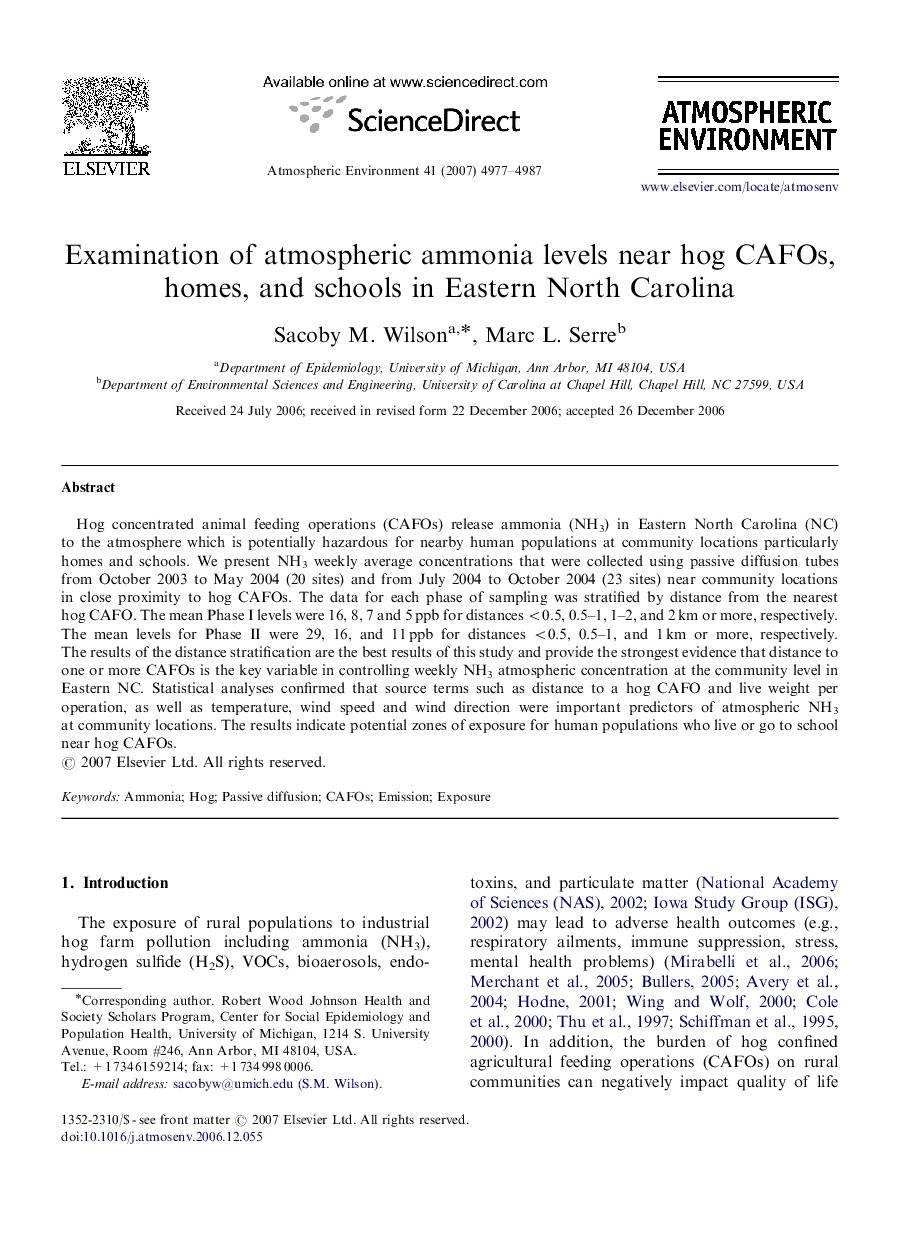| Article ID | Journal | Published Year | Pages | File Type |
|---|---|---|---|---|
| 4443585 | Atmospheric Environment | 2007 | 11 Pages |
Hog concentrated animal feeding operations (CAFOs) release ammonia (NH3) in Eastern North Carolina (NC) to the atmosphere which is potentially hazardous for nearby human populations at community locations particularly homes and schools. We present NH3 weekly average concentrations that were collected using passive diffusion tubes from October 2003 to May 2004 (20 sites) and from July 2004 to October 2004 (23 sites) near community locations in close proximity to hog CAFOs. The data for each phase of sampling was stratified by distance from the nearest hog CAFO. The mean Phase I levels were 16, 8, 7 and 5 ppb for distances <0.5, 0.5–1, 1–2, and 2 km or more, respectively. The mean levels for Phase II were 29, 16, and 11 ppb for distances <0.5, 0.5–1, and 1 km or more, respectively. The results of the distance stratification are the best results of this study and provide the strongest evidence that distance to one or more CAFOs is the key variable in controlling weekly NH3 atmospheric concentration at the community level in Eastern NC. Statistical analyses confirmed that source terms such as distance to a hog CAFO and live weight per operation, as well as temperature, wind speed and wind direction were important predictors of atmospheric NH3 at community locations. The results indicate potential zones of exposure for human populations who live or go to school near hog CAFOs.
